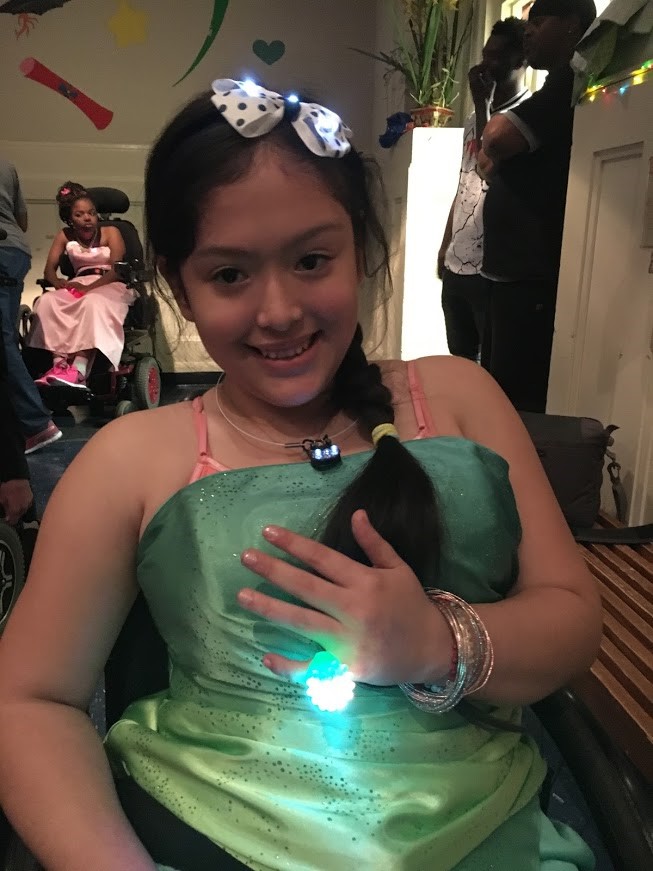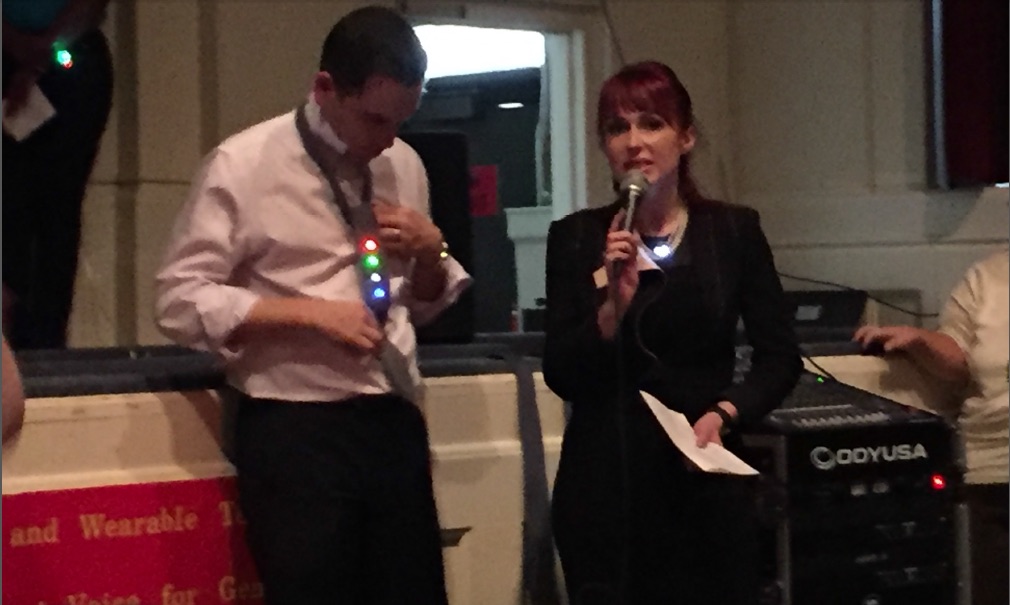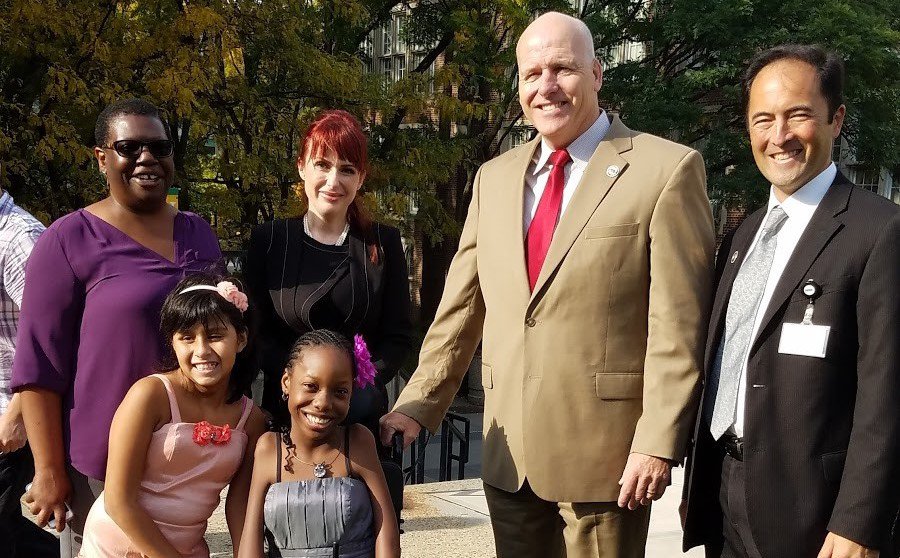The saying “you can’t just sprinkle 21st century skills on a 20th century donut” certainly applies to the current state of education. As educators of students with low-incidence disabilities in the 21st century, it is our responsibility not just to create activities with technology that emphasize the bells and whistles but also make authentic connections to pedagogy and curate deep and meaningful experiences for student learning.
At A. Harry Moore, the instructors strive to empower our students by creating experiences that increase their sense of self and showcase their capabilities. We recently had the opportunity to plan a unique 21st century learning experience for our students called Scannable and Wearable Technology Day. The event – held on October 20th – included edible QR Code cakes, QR Code Building-Wide Scavenger Hunts, and Pokemon Go Augmented Reality Tours of the NJCU campus.
From museums, to runways, to makerspaces, E-textiles are being used for both function and fashion. With donated prom dresses, ties, and newly-purchased electronics, we created a project for our students with the goal of giving them ownership of the creating and building. They would not only be the models but also the designers and sew in the electronics.
This included an introduction to the basics of electronics necessary for using conductive thread to sew in LilyPad coin cell battery holders and LEDs. For anyone who has tried to sew E-textiles, they know that it requires focus and good eye-hand coordination. So, for some of our students the sewing had to be a hand over hand process. The design of the placement of the technology was up to the students. As each student completed their gown or tie, their pride in their work was evident.
The opportunity for students to share their designs and their new technology-based skills took place during a fashion show on our Scannable Wearable Day. The excitement of the students, faculty, staff, parents, and special guests was palpable.
With dimmed overhead lights, illuminated technology wearables, and an attentive audience, our student E-textile designers and models moved down the main aisle of our auditorium. As they made their way to the stage, their smiles and twirls were met with the applause of the audience.
How does this type of event appeal to a more global audience? Events like this are a great way to engage in collaboration at the local, regional, and state levels.
As part of our event, students explored augmented reality on the NJCU campus by being assigned as Pokémon Go Buddies to various guests from all over the state of New Jersey.
The Mayor of Jersey City, Directors from the NJDOE, and Superintendents from various counties in New Jersey got to experience augmented reality and gamified education from the student perspective. Technology should support the amplification of student voice in the 21st century and this concept was illustrated as the A. Harry Moore students proudly showcased how they knew more about the iPhone, the Pokémon Go App, and the historical relevance of the Pokémon Go stops on the NJCU Campus than the adults did. 
Digital learning should support intergenerational collaboration and Scannable Wearable day created this opportunity. Digital learning should also cultivate a culture where the child can assume the role of expert about the device, game, or learning concept. Similarly, the Augmented Reality Pokémon Go Hunt created conditions in which the children became the knowledge experts.
The Mayor of Jersey City donning his "wearable technology tie" as part of the day.Digital learning should be connected to the curriculum. When the students made their wearable technology dresses and ties, they learned about concepts that are referenced in the Next Generation Science Standards. NGSS P-PS4-4 states, “students will be able to apply scientific ideas to design, test, and refine a device that converts energy from one form to another.” When the students sewed the conductive thread into the gowns and ties used in the Scannable Wearable Technology Day fashion show, they learned about the transfer of energy from the battery to the LED light that illuminated the fashionable outfits that they wore on the runway.
We hope that you are inspired by our story of how we used scannable and wearable technology to craft an elegant learning experience for our students, faculty, and community members on October 20th, 2016. It inspired us to continue to expand upon the design principles that pertain to life and career skills, critical thinking and communication. Also, we were inspired to use information, media, and technology skills to support student success. All of these ingredients pertain to digital technology and student growth.
Courtney Pepe is the Supervisor of Curriculum and Instruction at the A. Harry Moore School of New Jersey City University in Jersey City, NJ where they do groundbreaking things with 21st century education and accessibility. @ipadqueen2012
Patricia Holzman is an educator at the A. Harry Moore School in Jersey City, New Jersey. She is a certified Special Education and Elementary Education Teacher with thirty years of experience. She now teaches a Science and Math Enrichment Program titled S.M.I.L.E. @PholzmanHolzman










